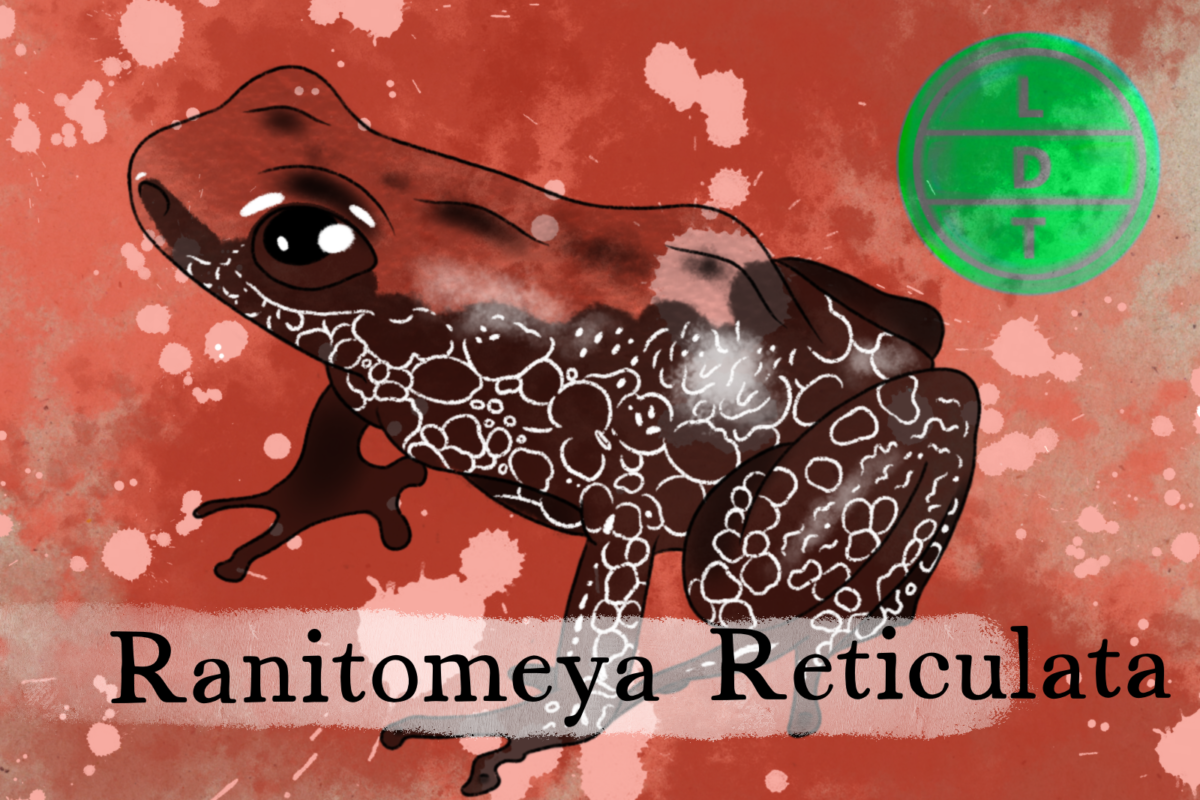“…and today we are talking about a tiny slimy father. But more on that later.”
Doting fatherhood is often a rarity in the animal kingdom. For most species, the lack of the maternal physical connection between fathers and offspring means that dads are relegated to nest protectors or they simply move on. But the red-backed poison dart frog is different. When his children are in need of resources, a brilliant color is not the only thing that can be found on his back. But carrying the future on your shoulders is sometimes the true test of manhood, in Life, Death, and Taxonomy.
Description of the Red-Backed Poison Dart Frog
- Very tiny tree frog with a more upright posture than something like the red-eyed tree frog
- Black legs and flanks with blue bubble lines… or blue legs and flanks with black blotches
- Titular bright red patch on their backs and heads
- Large black eyes -like a doll’s eyes
Measure Up
Female length
2.5 centimeters (1 inch)
A female red-back is the same length as…
- four cheerios
- One uncoiled mechanical pencil spring
- 1/136,794,240th the moon’s diameter
Weight
1 ounce
A poison dart frog is the same weight as
- two soda can tabs
- ⅓ of a cereal box
- 23,897 eye lashes
Fast Facts about the Red-Backed Poison Dart Frog
- Range: Live in the Amazon rainforests of Peru and Ecuador
- Diet: Just like Hermes Conrad, their diet is why they’re so spicy.
- They usually eat ants, mites, and beetles. These critters have venoms and poisons that are absorbed into the frog’s skin glands to be released either voluntarily through pores or when injured through wounds
- Their poison is pretty potent, the second strongest in the genus. It’s enough to be fatal to most mammals, birds, and reptiles that would try and make a snack out of the frog. Snakes can sometimes tolerate the toxin so you still gotta look out for them.
- Behavior:
- Super aggressive throughout their lives, even as tadpoles.
- They’re even cannibals.
- In fact, tadpoles that eat other tadpoles or particularly large mosquito larvae end up growing faster and living longer as frogs
Major Fact: Putting the Team on Your Back
These tiny frogs naturally live in groups of five or six. During the wet season, several groups come together for large breeding gatherings.
Males court females by calling to capture their attention and then gently stroking and licking them. When mating, males buzz loudly for up to 5 seconds to attract females.
Once a female selects a male, they hop away to a quiet spot, often in a bromeliad, to mate.
They lay 2-3 eggs every other week, and the male transports the tadpoles to small bodies of water.
After mating, the female lays eggs, and the male diligently carries the tadpoles on his back. He transports them to small bodies of water, such as bromeliad pools or leaf axils, where they can develop into fully grown frogs.
If there isn’t enough food around, females may lay an unfertilized egg for tadpoles to eat.
Ending: So put on your red warpaint, stay toxic, and give your kids piggyback rides until your lumbar gives out and you slip a disc like the red-backed poison dart frog here in LDT.

